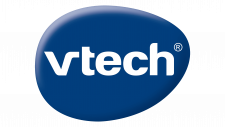Johnson Controls Logo
Johnson Controls is a global leader in building technology and solutions. Warren S. Johnson founded the company in the United States. He aimed to create energy-efficient systems for buildings. Johnson Controls specializes in HVAC, fire, and security systems. The company serves various sectors, including commercial, industrial, and residential. Their solutions improve operational efficiency and safety. Johnson Controls also focuses on sustainability. Their innovative products reduce energy consumption. The company operates in over 150 countries.
Meaning and history
Warren S. Johnson, a professor at the State Normal School in Whitewater, Wisconsin, founded Johnson Controls in 1885. He invented the electric room thermostat, revolutionizing temperature control in buildings. In 1887, he incorporated the company as the Johnson Electric Service Company. The company quickly gained recognition for its innovative products. In 1974, it adopted the name Johnson Controls. Over the years, Johnson Controls expanded its portfolio by acquiring various businesses to strengthen its position in building technologies. In 2005, it acquired York International, a leading HVAC equipment manufacturer. In 2016, Johnson Controls merged with Tyco International, a global fire and security provider. This merger enhanced their capabilities in building safety and security. Johnson Controls is known for its advanced technologies and commitment to sustainability. Their history reflects continuous innovation and growth.
What is Johnson Controls?
Johnson Controls is a leading provider of building technology and solutions. They specialize in HVAC, fire, and security systems. Their products enhance efficiency and safety. The company is committed to sustainability.
1985 – 1902
The logo showcases a circular design with a simple, rustic appearance. A white background contrasts with the dark brown elements. Large, bold letters “E”, “J”, and “S” interlock at the center. The “E” sits on the left, the “S” on the right, and the “J” integrates through the middle, connecting both. A thin, slightly uneven circular border encases these letters, adding a handcrafted feel. The straightforward typography features minimal styling. The design exudes vintage charm, reflecting the company’s historic roots. The dark brown color conveys stability and tradition. This logo emphasizes the company’s early identity and foundational values.
1902 – 1910s
The updated logo introduces several distinct changes from the previous design. The background is now a deep red, creating a bold contrast with the logo’s elements. The intricate monogram, which combines the letters “J”, “S”, and “C”, is rendered in a striking yellow color. This new color scheme enhances visibility and impact. The monogram’s style is more ornate, featuring additional curves and flourishes. The circle’s border is now thicker and in a complementary brown shade, providing a solid frame for the design. The overall look is more sophisticated and detailed, reflecting a progression in the company’s visual identity. The design retains its classic elements while introducing a more polished and professional appearance. The red and yellow palette signifies energy and innovation.
1910s – 1961
The new logo shows a significant evolution from the previous design. It maintains the circular format but now features a stark white background. The monogram has been modernized with a bold, red color. The letters “J”, “S”, and “C” are still present but are more geometric and simplified. The “J” and “C” flank the central “S”, creating a balanced, symmetrical design. Multiple concentric circles frame the monogram, adding depth and visual interest. This new design is cleaner and more contemporary. It emphasizes clarity and modernity while retaining the company’s initials. The update reflects a shift towards a more streamlined and professional image. The use of red and white provides a sharp, contrasting aesthetic, making the logo easily recognizable.
1961 – 1974
The logo marks a significant departure from previous designs. It adopts a modern, minimalist approach with a square format. The background is divided horizontally into black (top) and red (bottom) halves. The monogram has been replaced by a stylized, lowercase “jc” in bold white. The “j” forms a sweeping curve that intersects the “c,” creating a unified, fluid design. This new logo emphasizes simplicity and modernity. The sharp contrast between black, red, and white ensures high visibility and impact. This transformation reflects a contemporary, forward-thinking brand identity. The design is clean and versatile, suitable for various applications. The use of lowercase letters adds a touch of approachability. The updated logo represents a shift towards a more modern and accessible image. It underscores the company’s evolution while maintaining its core identity.
1974 – 2008
The logo showcases a major rebranding from the previous design. It adopts a sleek, minimalist approach with a purely typographic style. The logo consists of the words “JOHNSON CONTROLS” in uppercase, black, sans-serif font. The letters are evenly spaced, providing a clean and modern appearance. Notably, the “O” in “JOHNSON” and “CONTROLS” are replaced by four interlocking circles, creating a distinctive visual element. This design emphasizes simplicity and elegance. It reflects a forward-thinking and innovative brand identity. The use of black font on a white background ensures high contrast and readability. This change demonstrates the company’s evolution towards a more sophisticated and refined image. The logo’s modern look aligns with contemporary design trends. The update signifies Johnson Controls’ commitment to innovation and excellence. The interlocking circles symbolize unity and integration.
2008 – Today
The latest logo represents a substantial update from the previous design. The new logo features a more dynamic and colorful approach. The typography is a modern, bold blue sans-serif font, presenting “Johnson Controls” in a stacked format. The most striking addition is a globe-like icon composed of wavy lines in varying shades of blue and green. This icon symbolizes innovation, global reach, and sustainability. The colors blue and green convey trust, technology, and environmental consciousness. This design moves away from the minimalist black and white scheme. It reflects a more vibrant and forward-looking brand identity. The intertwined lines suggest connectivity and integration, key aspects of Johnson Controls’ mission. This update signifies the company’s commitment to modern solutions and global impact. The use of blue and green enhances visual appeal and aligns with contemporary design trends. The logo effectively represents the company’s evolution and future direction.

















